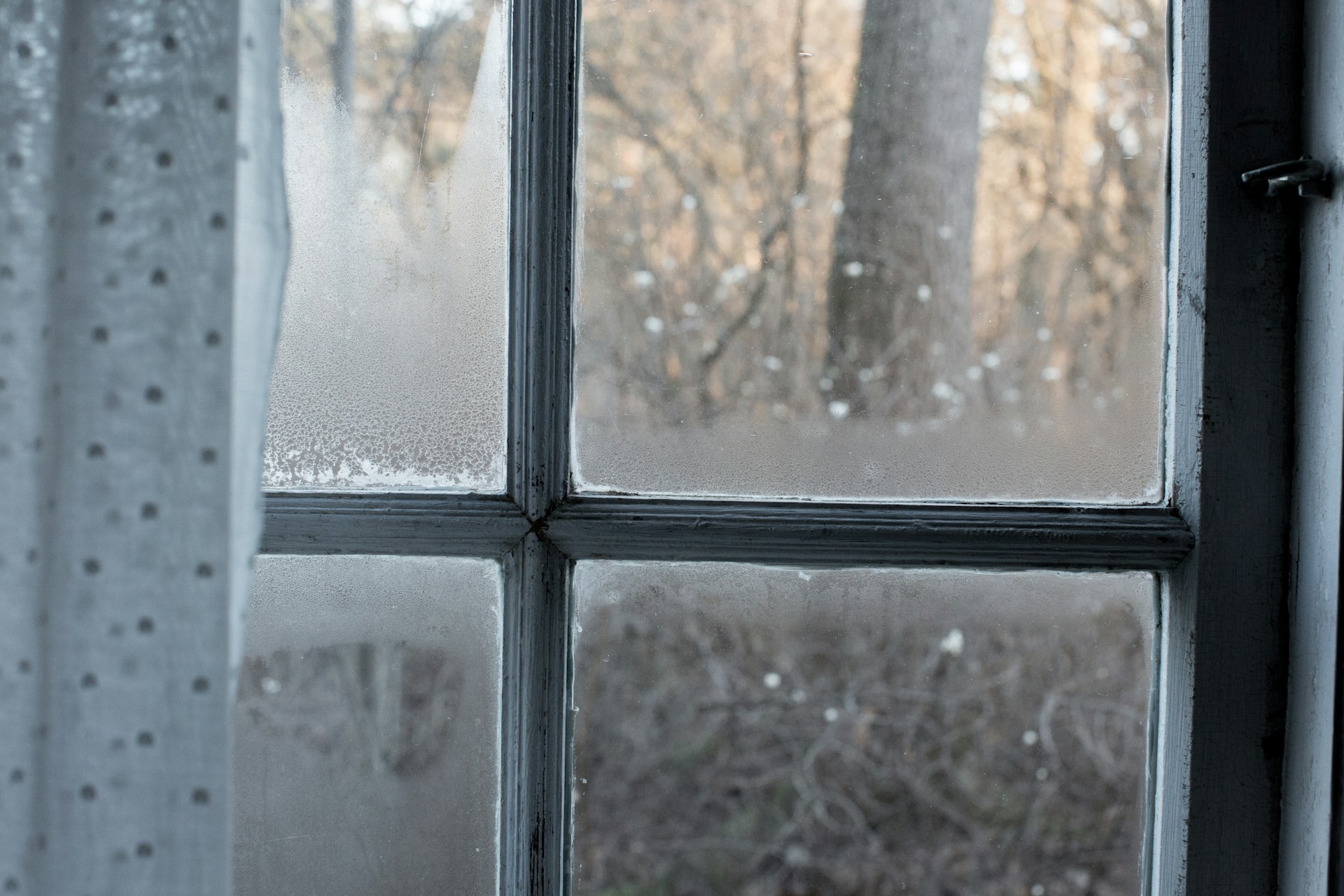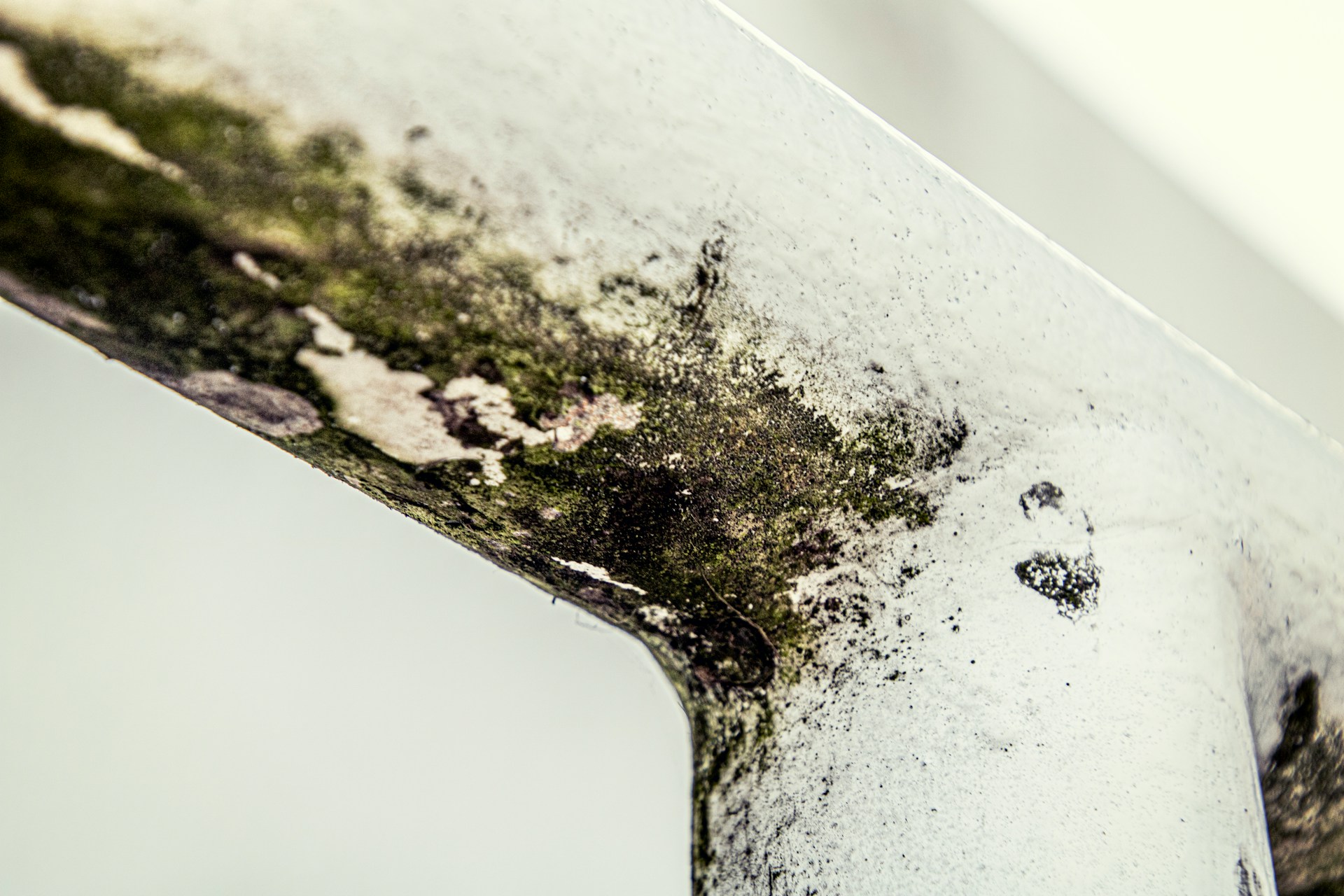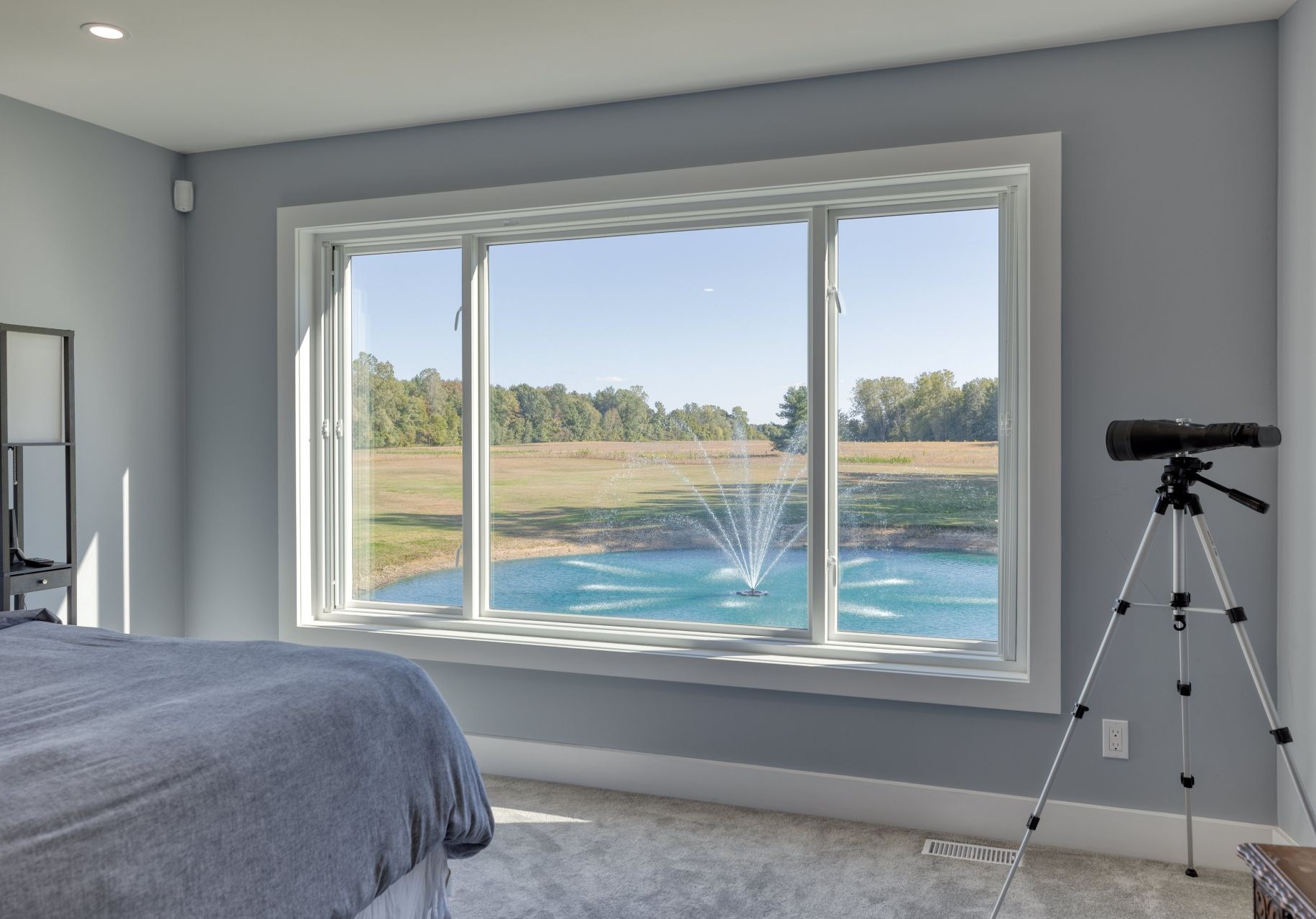
Window Cleaning
Condensation on Windows: Causes, Types, and Solutions!
Window condensation is a prevalent issue that affects homeowners across Canada, particularly during the colder months when temperature differences between indoor and outdoor environments are most pronounced. Simply put, condensation occurs when warm, moisture-laden air encounters a cooler surface. Water vapor transforms into liquid water droplets that appear on your windows.
Without a doubt, it's crucial to minimize condensation as soon as possible if you want to maintain both your home's structural integrity and your family's health. Otherwise, persistent interior condensation can lead to mould growth, window frame damage, compromised air quality, and costly repairs.
Additionally, understanding when condensation signals a problem versus when it indicates efficient window performance can save you from unnecessary worry and help you make informed decisions about maintenance and replacements.
Key Takeaways
- Window condensation occurs when warm, moist air meets the cold glass surface.
- There are different types of condensation, including interior, exterior, and between-pane condensation. Interior condensation is the most concerning as it can cause mold, health issues, and window damage.
- Interior and between-pane condensation signals excess indoor humidity or failed window seals and should be addressed as soon as possible. Exterior condensation is usually harmless and shows that windows are well-insulated.
- Reducing indoor humidity, ensuring proper ventilation, and maintaining steady indoor temperatures can help manage condensation. If your windows are damaged or old, you may need to replace them with modern, energy-efficient options.
How Does Window Condensation Form?

Condensation forms when warm, moist air meets a cold surface, like your window glass on a chilly winter day. Imagine taking a cold drink out of the fridge on a hot summer afternoon. You’ll notice that the outside of the glass gets wet and sweaty. That’s condensation! The same thing happens on your windows.
A really important thing to mention is the dew point. Think of the dew point as a magic temperature. When the air cools down to that magic number, it can no longer hold all the moisture it contains, so the extra water comes out as liquid. The more humid the air is, the higher the dew point is. This means that condensation appears more easily even if the air and the window aren’t wildly different in temperature. Conversely, when the air is dry, surfaces must be significantly cooler than the air temperature for condensation to occur.
Windows are especially good at causing condensation because they act like “thermal bridges.” This just means they connect the warm inside of your house to the cool air outside. The glass lets heat escape or cold come in more easily than walls do, so your windows often become the coldest spots in your home in winter.
If you have older single-pane windows, they’re even more likely to get covered in condensation because they don’t have the insulation layers that modern double-glazed windows or triple-glazed windows have. Even energy-efficient windows can show condensation sometimes, especially when the indoor air is really humid.
Types of Window Condensation
There are three types of window condensation: interior condensation, exterior condensation, and condensation between panes. The good news is that not all three are a sign that there's something wrong with your windows' insulation! Keep reading to learn which ones should concern you!
Interior Window Condensation

Interior window condensation forms when warm, humid indoor air meets the cold glass surface of windows. In this case, you may see water droplets on the interior surface of your windows that can be wiped away from inside your home. The windows may also appear foggy.
Interior condensation is usually caused by:
- High indoor humidity levels exceeding 60%
- Poor ventilation systems
- Inadequate window insulation
Everyday activities around the house add moisture to the air and contribute to this problem. Think about when you cook, take a hot shower, or even just breathe. Other things that add moisture include having many houseplants, aquariums, or drying clothes indoors.
Plus, if your home doesn't have enough natural ventilation, meaning if the air doesn’t move around much, and if heavy curtains cover your windows, the moisture can get trapped near the glass and cause condensation.
You’re most likely to notice this problem in the winter when your heated home is much warmer than the cold external air. But sometimes, condensation can also happen in the humid summer months. The issue can get worse if you keep your windows and doors closed most of the time, which traps humid air inside.
Is Interior Window Condensation an Issue?
You should definitely address interior condensation as soon as possible. If you ignore it, it can lead to serious health and structural issues.
The water droplets can damage window frames (especially wooden window frames), causing them to rot or warp over time.
Even more worrying, the damp conditions are perfect for mold and mildew to grow, not just on your windows but on surrounding walls and surfaces. Mold can affect your home's air quality and may cause health problems, especially for people with asthma, allergies, or other breathing conditions.
So, it’s important to take steps early to control condensation and keep your home safe and comfortable.
Exterior Window Condensation
You might notice water droplets or fog forming on the outside of your windows. This is especially common early in the morning. This often happens after a clear, calm night with cold air. It is also more common when the temperature outside is slightly higher than the glass surface and when the air is full of moisture.
Think of it like morning dew on grass: the cool glass of your windows causes the moisture in the air to settle there. This is most common in spring, summer, or fall when outdoor humidity levels are higher.
Several environmental factors can also influence how much condensation you see outside. If you live in a humid region or your yard has lots of plants and a sprinkler system, the moisture in the air around your house can increase, making exterior condensation more likely.
Furthermore, dense shrubs or trees that are planted too close to the house can block airflow. This traps moisture near the windows. So, if you adjust landscaping or sprinkler schedules, you may be able to reduce outdoor moisture levels if exterior window condensation becomes a hassle.
Is Exterior Window Condensation an Issue?
The surprising thing is, exterior condensation isn’t a problem or a sign that your windows are not performing well. In fact, it’s usually a good sign! The fact that the exterior glass surface is cold and that condensation appears on it indicates that your windows are performing well.
So if you see your windows fogging up on the outside, it means your home is well-insulated and energy-efficient.
Condensation Between Window Panes

Condensation can also appear between the glass panes of your double- or triple-pane windows. This is different from condensation on the inside or outside surfaces. Why? Because it forms inside the sealed space that’s supposed to keep moisture out.
The main cause here is a failure of the window’s seal. These windows are designed with airtight seals and special moisture-absorbing materials called desiccants. These are installed between the panes. They are meant to keep that space dry.
But over time, temperatures going from hot to cold make the window glass expand and contract, a process called thermal pumping. This movement slowly weakens and cracks the seals, allowing moisture to sneak in.
Once moisture gets inside, the desiccant material can only soak up so much. After it’s full, the moisture starts to collect as fog or water droplets between the panes. Sadly, this problem usually gets worse over time. It causes your windows to look foggy or cloudy all the time, makes it hard to see through them, and reduces their energy efficiency capabilities.
Is Condensation Between Panes an Issue?
Condensation between window panes is definitely an issue because it means your window's insulation is compromised.
Besides blocking your view, condensation between panes means that the insulating gas (like argon) that helps keep your home warm or cool can escape the IGU. This reduces the energy efficiency of your windows, leading to higher heating and cooling bills.
The best long-term solution is often to replace the sealed glass unit or the entire window, especially if the window is old or the seal is badly damaged. You can rely on quick fixes like professional defogging, but these usually don’t fix the root problem. They just clear the moisture temporarily.
Causes of Excess Humidity in Homes
Excessive moisture indoors is one of the main drivers of window condensation. It is often caused by everyday household activities or hidden structural issues. Identifying and addressing these root causes can help you control moisture before it builds up on your windows. Here's what you should consider:
- Cooking, showering, and laundry without exhaust fans: daily routines like boiling water, taking hot showers, or drying clothes indoors all release large amounts of water vapour into the air. Without proper exhaust fans or ventilation, this moisture lingers and eventually condenses on cold window glass.
- Leaky roofs, basements, or plumbing: water ingress and hidden water leaks introduce constant moisture inside a home. Roof leaks, seepage through basement walls, and dripping pipes not only damage structures but also increase your home's humidity levels.
- Poor insulation or improperly sealed windows/doors: air leaks let outside air infiltrate and disrupt indoor temperature balance. As a result, surfaces like windows become colder, making them prime spots for condensation.
- Overuse of humidifiers: while humidifiers can make dry winter air more comfortable, setting them too high can easily push relative humidity past safe levels, creating unnecessary condensation problems.
Health Risks Linked to Window Condensation

As mentioned earlier, in some cases, condensation on windows is more than just a cosmetic nuisance. It often creates the perfect environment for health hazards inside your home, such as:
- Mold and mildew growth worsening asthma and allergies. Persistent moisture encourages mold and mildew to spread around window frames, walls, and ceilings. Mold spores can aggravate asthma symptoms, trigger allergic reactions, and cause respiratory irritation.
- Dust mite proliferation in humid conditions. High humidity also fosters dust mites, microscopic organisms that thrive in damp environments. These are common triggers for allergy flare-ups and sinus issues.
- Long-term risks of poor indoor air quality. Consistently high moisture levels reduce overall air quality, leading to headaches, fatigue, and other symptoms associated with indoor air pollution. Over time, this can affect the comfort and well-being of everyone in the home, especially children and older adults.
How to Get Rid of Window Condensation and Prevent It
We've already established that the only window condensation types you need to worry about is the interior one and the one between the panes. While the exterior condensation on your windows can be a nuisance, it does not affect your windows' energy performance or your home's energy efficiency.
However, we've prepared a list of methods that can help you get rid of/prevent condensation on all window surfaces!
For Interior Condensation
Controlling moisture inside your home is the key to stopping interior condensation. Here's what you can try:
- Use dehumidifiers, especially in damp rooms, to reduce humidity levels below 60%.
- Make sure your home has adequate ventilation. Exhaust fans in bathrooms and kitchens help get rid of and prevent excess moisture.
- Get more air circulation using ceiling fans.
- Open windows regularly to let the air move throughout the house.
- Avoid blocking airflow around window areas.
- Make sure to open bedroom windows as soon as you wake up.
- Dry clothes outside, cover pots when cooking, keep the bathroom door open while showering, and have fewer houseplants that release moisture.
- Try to keep indoor temperatures steady to avoid cold window surfaces where condensation likes to form.
For more detailed tips, check out our comprehensive article Tips on How to Prevent Window Condensation.
For Exterior Condensation
If you see condensation on the outside of your windows, here's what you can try:
- The best method is to let nature do its magic - when the sun is up, the condensation will be gone!
- Trim back vegetation and shrubs near windows to increase airflow and reduce moisture buildup.
- Adjust your sprinkler systems to avoid high humidity levels in the morning.
Remember, outside condensation usually means your windows are performing well and keeping warm air in, so it’s a mostly harmless sign of good energy efficiency!
For Between-Pane Condensation
Condensation trapped between the glass panes of your windows is a different problem and requires a more complex solution, such as:
- Professional defogging. This is a service offered by specialists who clean out moisture through small holes drilled in the glass. It improves appearance but usually only fixes the symptoms temporarily.
- Replacing the IGU. The best long-term fix is to replace the Insulated Glass Unit (IGU) or the entire window if the seal is broken and can’t keep moisture out anymore.
Check your window’s warranty too. Many manufacturers cover seal failures for a number of years, which can save you money on repairs or replacements.
Window Replacement and Upgrades

Replacement is usually necessary if your windows are old, show signs of serious damage like cracked glass or failing seals, or if they no longer keep out drafts and moisture effectively. In short, if home condensation problems persist even after you tried to fix them, it might be time for new windows.
Modern windows come with features designed to reduce window condensation and improve energy savings. Therefore, look for double- or triple-pane glass, which provides better insulation (the space between the glass panes is filled with inert gases like argon or krypton).
Windows with low-emissivity (low-E) coatings are also great at reducing condensation. These thin, almost transparent coatings reflect heat back into your home during cold months and keep heat out during summer. These upgrades not only prevent moisture buildup but also reduce heating and cooling costs.
Upgrading windows can lead to important energy efficiency benefits, such as:
- Lower energy costs
- A more comfortable indoor temperature year-round
- Less strain on your heating and cooling systems.
Over time, these savings often outweigh the upfront investment in higher-quality windows.
However, proper professional installation is just as important as the window itself. Poor sealing or incorrect fitting can lead to drafts, moisture leaks, and condensation issues. So, make sure to choose experienced installers like those from Magic who understand Canada’s climate!
Maintenance and Long-term Management
To keep windows in top shape for years, it's important to take great care of them! Here's what you should add to your seasonal/yearly to-do list:
- Inspect windows at least twice a year, ideally during spring and fall.
- Look for signs like condensation buildup, cracks, or damaged weatherstripping.
- Check if the windows open and close smoothly.
- Look for signs of mold or frame deterioration.
- Check the caulking and weatherstripping before winter to avoid drafts.
- Clean gutters and trim vegetation around windows to prevent moisture buildup.
If you notice persistent moisture, difficulty opening windows, or signs of mold or frame deterioration, it’s time to call a professional for a thorough assessment. Early expert intervention can prevent costly repairs down the line.
Consider the costs carefully. Sometimes, repairing existing windows saves money. But in cases of repeated condensation or structural damage, it may be more cost-effective to replace the window.
Seasonal Considerations
In Canada, seasonal weather greatly influences window condensation patterns.
During winter, interior condensation is most common as warm indoor air meets cold window surfaces.
In summer, condensation tends to form outside, especially in humid regions or on mornings after cool nights. Running the air conditioning can also keep the window surfaces cold, making exterior condensation more visible.
Spring and fall bring changes in temperature and humidity. This increases exterior condensation, as cool nights and warm mornings cause moisture to settle on window exteriors.
Regional climate differences also play a role. Coastal areas like Vancouver with milder, wetter weather have different condensation patterns than colder, drier regions like Alberta or Northern Ontario. Therefore, make sure to tailor prevention strategies to your local weather conditions.
Say Goodbye to Condensation with Magic Windows!

If you’re starting to see fog or moisture trapped between your window panes or you’re ready to upgrade from old single-glass units, you’re probably searching for the most energy-efficient option available. Magic's your solution!
Here’s what makes Magic stand out in energy performance:
- Our windows feature top-grade warm-edge spacers along with increased gas fill between the panes. This combination helps minimize heat transfer and reduces the chance of condensation forming inside.
- Thanks to our exclusive Hybrid Fusion Frame, our windows don't warp and crack under extreme temperature fluctuations, significantly reducing the risk of condensation.
- With our 40-year warranty, you won’t have to worry about condensation issues or long-term durability.
We must admit, though, that exterior window condensation can be quite a nuisance with Magic windows - that is, because they insulate much better than other windows!
Curious about even more innovative features? Schedule a free consultation today and see the magic for yourself!
Frequently Asked Questions
How do you stop condensation on windows?
You can reduce condensation on windows by improving ventilation, using a dehumidifier, keeping consistent indoor temperatures, adding weatherstripping, and ensuring proper insulation.
Should I wipe condensation off windows?
Yes, you should wipe condensation off windows as soon as it forms to prevent mold, mildew, and damage to window frames.
Why do I get condensation on the inside of my windows?
Condensation forms on the inside of your windows when warm, moist indoor air meets the cold glass surface of your windows. This is common in homes with poor ventilation, single-pane or old windows, and high humidity levels from cooking, showering, or drying clothes indoors.
When to worry about condensation on windows?
You should worry about condensation on windows if it is constant, leads to mold growth, or damages walls and frames. Persistent condensation may indicate poor ventilation, excessive indoor humidity, or failing window seals.
Is exterior window condensation a problem?
Exterior window condensation is not typically a problem, as it is an indicator that your windows insulate well. However, if it persists, it could obscure your view or signal underlying issues.
What should I do if there is condensation between the window panes?
If you notice condensation between window panes, it typically means there's a seal failure. You should consider replacing the glass unit or the entire window.